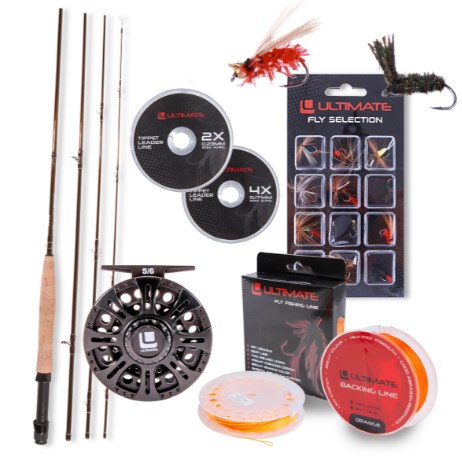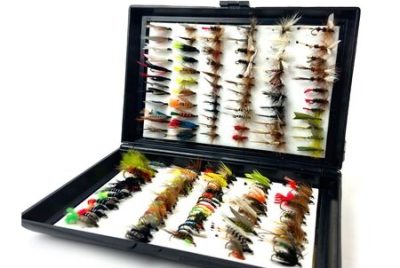Fly Fishing Gear for Beginners
Introduction
Fly fishing is more than just a hobby; it’s a peaceful and engaging way to connect with nature. Whether you’re aiming for trout in a mountain stream or bass in a lake, the right gear can make all the difference. But if you’re just starting out, the plethora of equipment options can be overwhelming. Don’t worry – I’m here to guide you through the essentials.
Essential Fly Fishing Gear

To get started with fly fishing, you’ll need some key pieces of equipment. Let’s break them down.
Fly Rods: Your Primary Tool
The fly rod is the cornerstone of your fishing gear. It’s what you’ll use to cast your line and hook your fish.
Choosing the Right Fly Rod
When picking your first fly rod, consider the type of fishing you’ll be doing. If you’re targeting small trout in a creek, a lighter rod (say, a 3-5 weight) is ideal. For larger fish or saltwater fishing, you’ll want something heavier (8-10 weight).
Rod Weight and Length
Rod weight refers to the size of the fish you’re targeting and the line you’ll be using. Rod length is also crucial; longer rods (9 feet) are great for longer casts, while shorter rods (7-8 feet) offer better control in tight spaces.
Fly Reels: Balancing Your Rod
Your fly reel should complement your rod, providing balance and helping manage your line.
Types of Fly Reels
Fly reels come in different designs, but for beginners, a standard arbor reel is a good start. It’s simple to use and effective for most fishing situations.
Reel Size and Material
Match the reel size to your rod and line weight. Most reels are made from aluminum, which offers a good balance of durability and weight.
Fly Lines: Connecting You to the Fish
Your fly line is what delivers your fly to the fish. It’s essential to choose the right type of line for your fishing environment.
Types of Fly Lines

There are floating lines, sinking lines, and sink-tip lines. For most beginners, a floating line is the easiest to manage and works well in various conditions.
Backing, Leader, and Tippet
Backing is a thin, strong line attached to your reel, followed by the fly line. The leader is a tapered line that connects the fly line to the tippet, the final section where you tie your fly. Each part plays a role in delivering and presenting your fly accurately.
Flies: The Bait of Fly Fishing
Flies mimic the insects and other creatures fish eat. They come in various types and sizes.
Dry Flies, Wet Flies, and Streamers
Dry flies float on the water’s surface, wet flies sink, and streamers mimic small fish. Each type targets different fish behaviors and conditions.
Matching the Hatch
To increase your chances of a catch, use flies that match the insects currently hatching in the area you’re fishing. Observation and local knowledge are key here.
Accessories: Enhancing Your Experience
While the core gear is essential, accessories can significantly enhance your fly fishing experience.
Waders and Boots
Waders keep you dry and warm, allowing you to fish in deeper waters. Boots with good traction are a must for slippery riverbeds.
Vests and Packs
A fishing vest or pack helps keep your gear organized and accessible. Look for one with plenty of pockets and attachment points.
Tools and Gadgets

Tools like nippers, forceps, and fly boxes are indispensable for managing your line and flies. A good pair of polarized sunglasses will also help you see fish and reduce glare.
Setting Up Your Fly Fishing Gear
Getting your gear ready is a critical step before hitting the water.
Assembling Your Rod and Reel
Start by attaching your reel to the rod. Ensure it’s secure and properly aligned.
Attaching the Fly Line
Thread the fly line through the rod guides, from the reel to the tip. This can be a bit tricky, but take your time to ensure it’s done correctly.
Tying Effective Knots
Learning a few basic knots, like the improved clinch knot and the loop-to-loop connection, will ensure your flies are securely attached and easily changeable.
Tips for a Successful Fly Fishing Trip
Now that your gear is ready, here are some tips to ensure a successful outing.
Finding the Right Spot
Do some research to find good fishing spots. Local fly shops and online forums can be great resources.
Casting Techniques
Practice makes perfect. Work on your casting technique to ensure you can place your fly where you want it.
Reading the Water
Look for signs of fish activity, such as rising fish or insect swarms. Understanding water flow and fish behavior will help you choose the best spots to cast.
Common Mistakes and How to Avoid Them

Even seasoned anglers make mistakes. Here are some common ones and how to avoid them.
Overcasting and Line Management
Avoid overcasting – it often scares fish away. Proper line management is also crucial to prevent tangles and ensure smooth casting.
Improper Fly Selection
Choosing the wrong fly can lead to a long, unproductive day. Match your flies to the local insect life and fishing conditions.
Ignoring Weather and Water Conditions
Weather and water conditions greatly affect fish behavior. Pay attention to these factors and adjust your tactics accordingly.
Conclusion
Fly fishing is a rewarding and immersive sport that brings you closer to nature. With the right gear and a bit of practice, you’ll be well on your way to becoming a proficient angler. Remember, patience and persistence are key. Now, grab your gear and hit the water – those fish aren’t going to catch themselves!
FAQs
- What weight fly rod should a beginner use?
- A 5-weight rod is versatile and great for most beginner situations, handling both small and medium-sized fish well.
- How do I choose the right fly line?
- For beginners, a floating line is easiest to handle and suitable for most fishing conditions.
- What are the essential accessories for fly fishing?
- Besides the rod, reel, and flies, waders, a vest or pack, nippers, forceps, and polarized sunglasses are very useful.
- How can I improve my casting technique?
- Practice regularly, and consider taking a lesson from a seasoned angler or instructor to refine your skills.
- What’s the best way to learn about local fishing spots?
- Visit local fly shops, join fishing forums, and connect with other anglers to get insights into the best fishing locations in your area.



